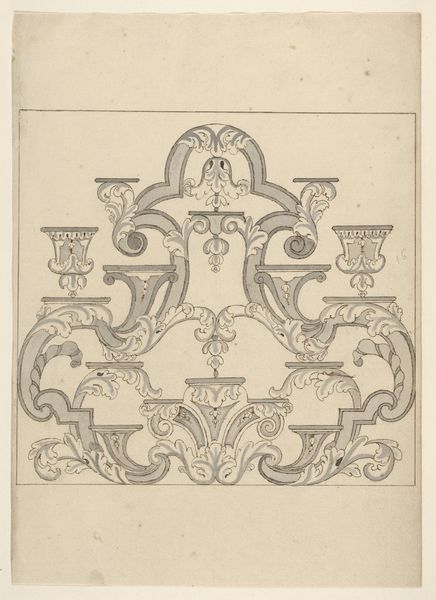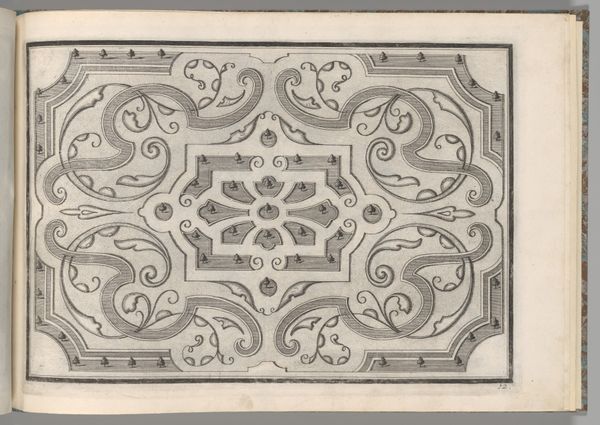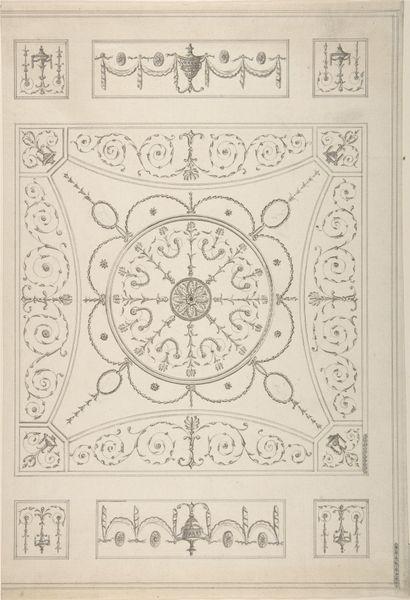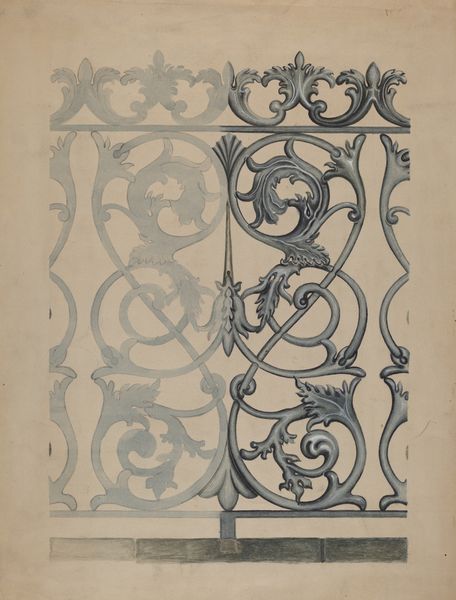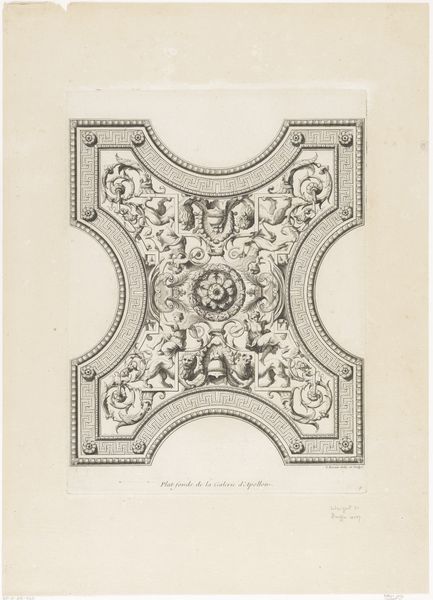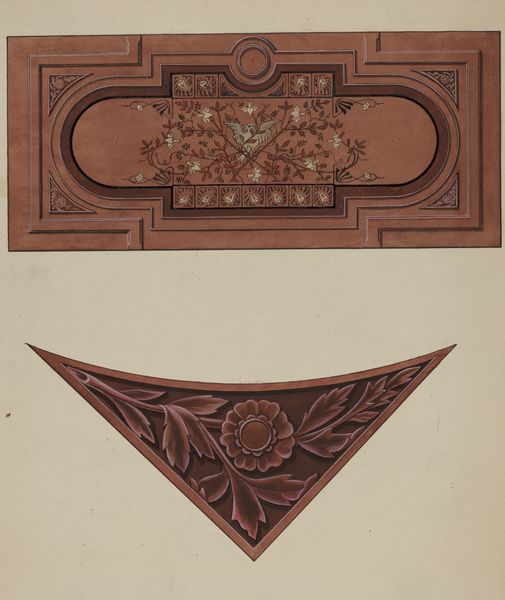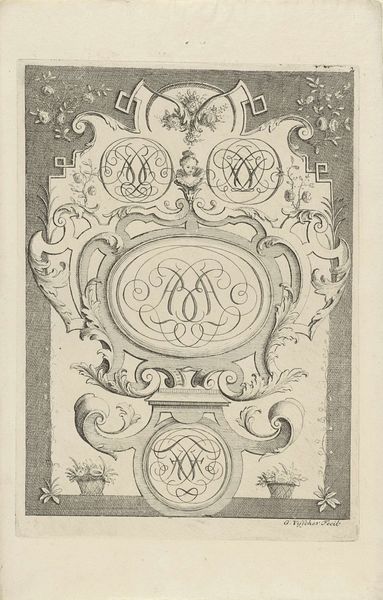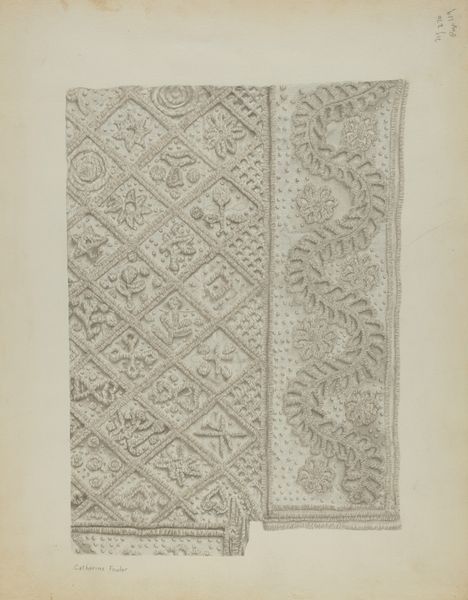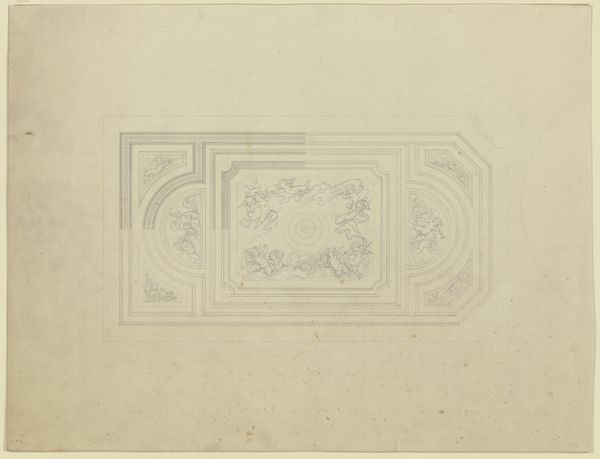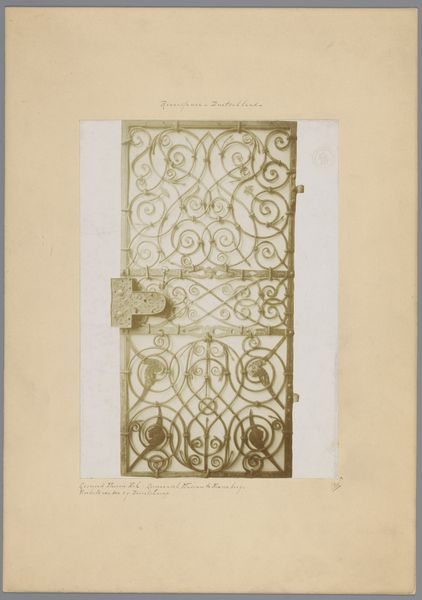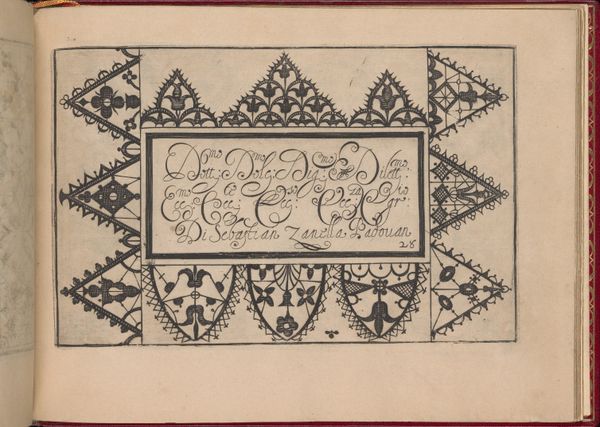
drawing
#
drawing
#
geometric
#
decorative-art
Dimensions: overall: 54.5 x 71 cm (21 7/16 x 27 15/16 in.) Original IAD Object: 45 1/2"long; 19 1/4"wide; 39 1/2"high
Copyright: National Gallery of Art: CC0 1.0
Curator: I find the rhythmic qualities of the work really calming; it almost seems like an intricate textile pattern in monochrome. Editor: Indeed, this is a drawing entitled “Connecticut-type Hadley Chest – Detail of Central Panel” made around 1936, revealing the beautiful geometric details of decorative art. Hadley chests were themselves elaborately decorated, reflecting the values and tastes of their owners in colonial New England. The chests represented not only wealth but also personal and cultural identity. Curator: So, it’s more than just pretty decoration. These designs were about class, aspiration, perhaps even a young woman advertising her skills for marriage? What does this design, reproduced nearly three centuries later, suggest about the politics of admiration? Are we, through aesthetic pleasure, silently approving a specific kind of class hierarchy? Editor: That’s an interesting reading. What about the public function of drawings like this one? The artist, Martin Partyka, very likely wasn’t attempting to subtly reproduce patriarchal values in this detailed technical drawing, but maybe was trying to study early examples of American decorative art in order to continue a specific cultural inheritance. His drawing can itself be understood within the context of early 20th century interest in folk art, antiquarianism, and colonial American design. Curator: I am fascinated by the centrality of the domestic, in that folk art tradition, where gender roles were particularly defined. Consider too, that the choice of geometric abstraction, rendered in simple, reproducible shapes, has parallels with weaving, embroidery and quilting patterns traditionally made by women in domestic settings. So this drawing—this object of decorative art—becomes itself a powerful statement about craft, labor and even gender. Editor: It reminds us how everyday objects become loaded with social meaning, both when they’re initially created and how they continue to be engaged by society. It invites consideration about why certain traditional craft styles survive and others fade into obscurity. Curator: Exactly. I suppose ultimately the joy comes from recognizing that an apparently harmless drawing, speaks volumes about aesthetics, gender and cultural appropriation. Editor: Well put, this work really highlights the crucial connections between past traditions, modern society, and cultural inheritance, doesn't it?
Comments
No comments
Be the first to comment and join the conversation on the ultimate creative platform.
